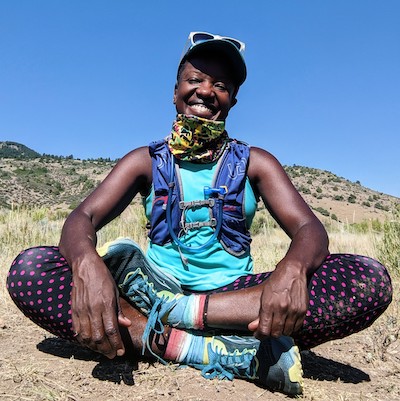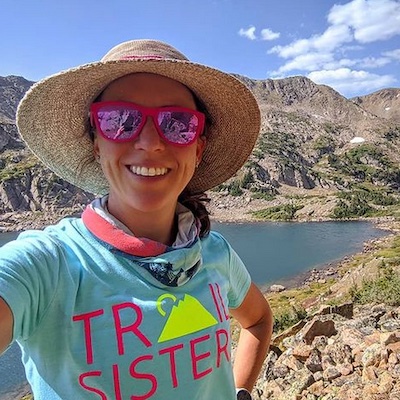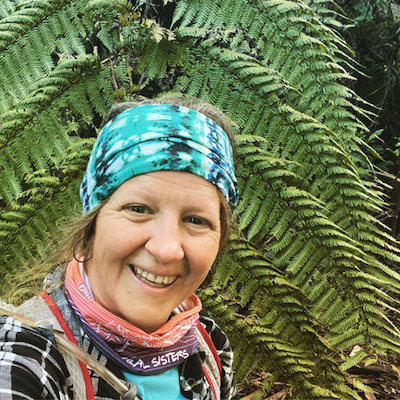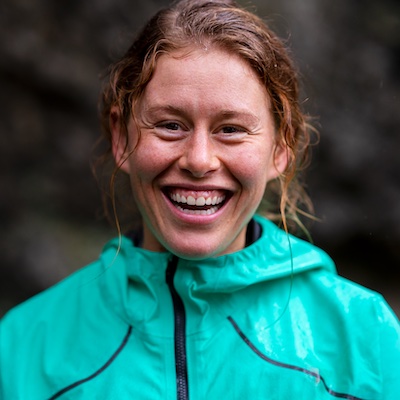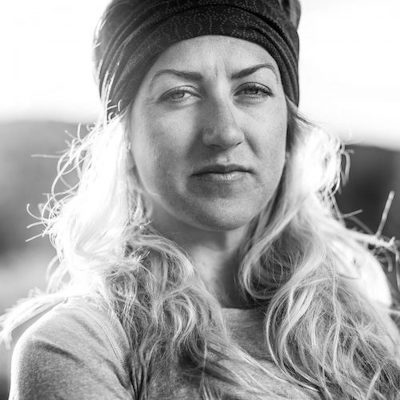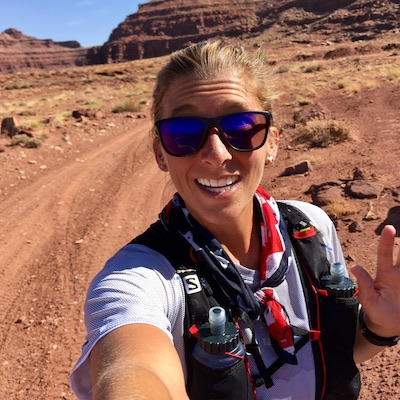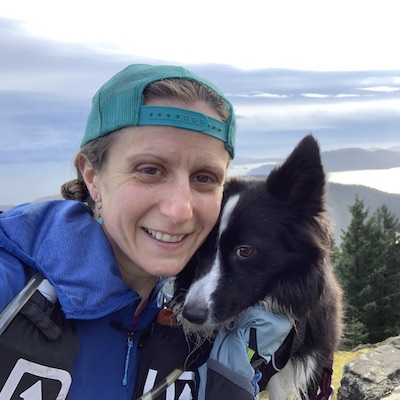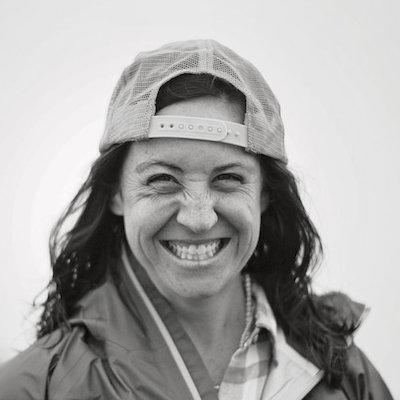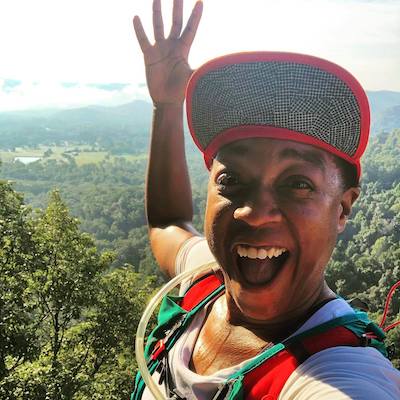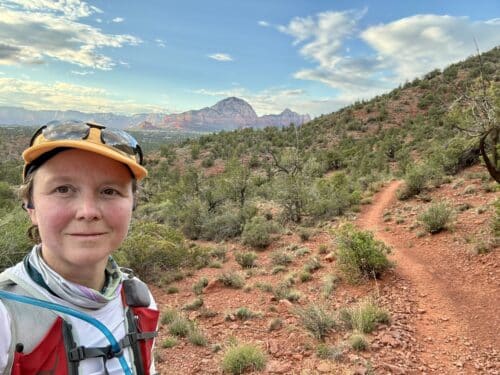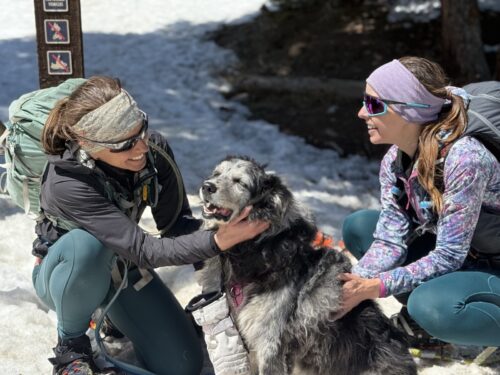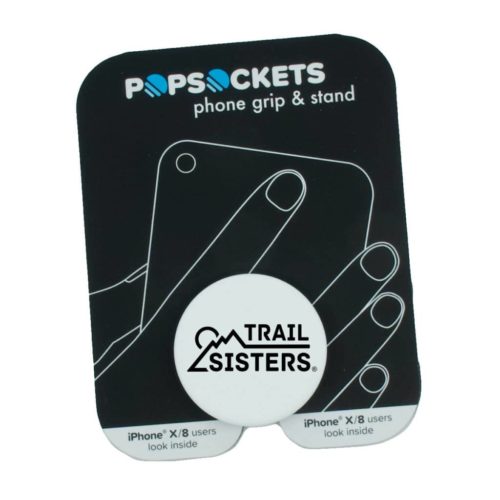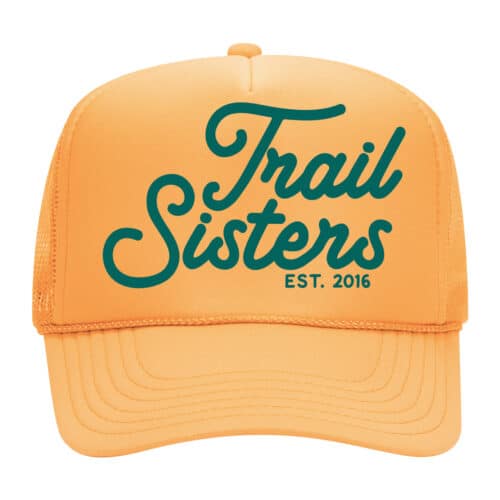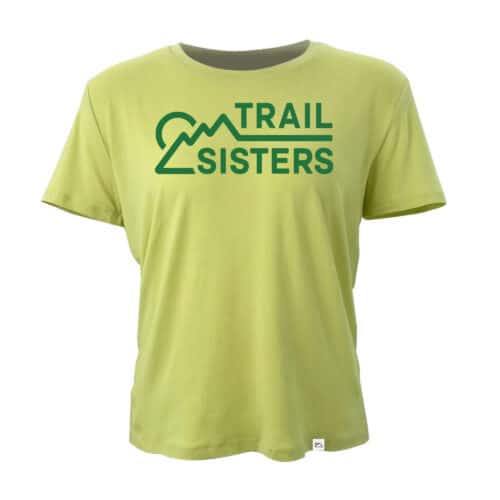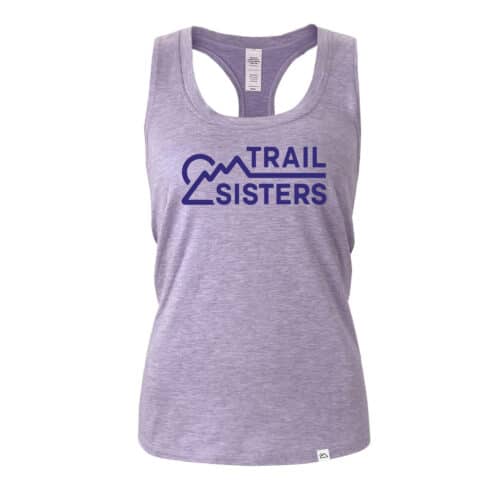Main Menu
Homepage / Ask the Trail Sisters / ASK TS: Run Downhill Without Falling
ASK TS: Run Downhill Without Falling

Ask the Trail Sisters Panel of Experts is made up of inspirational and knowledgeable women who share a love for trail running, hiking, and the outdoors. These women volunteer their time and expertise to help others enjoy a better experience on the trails.
Share This Article!
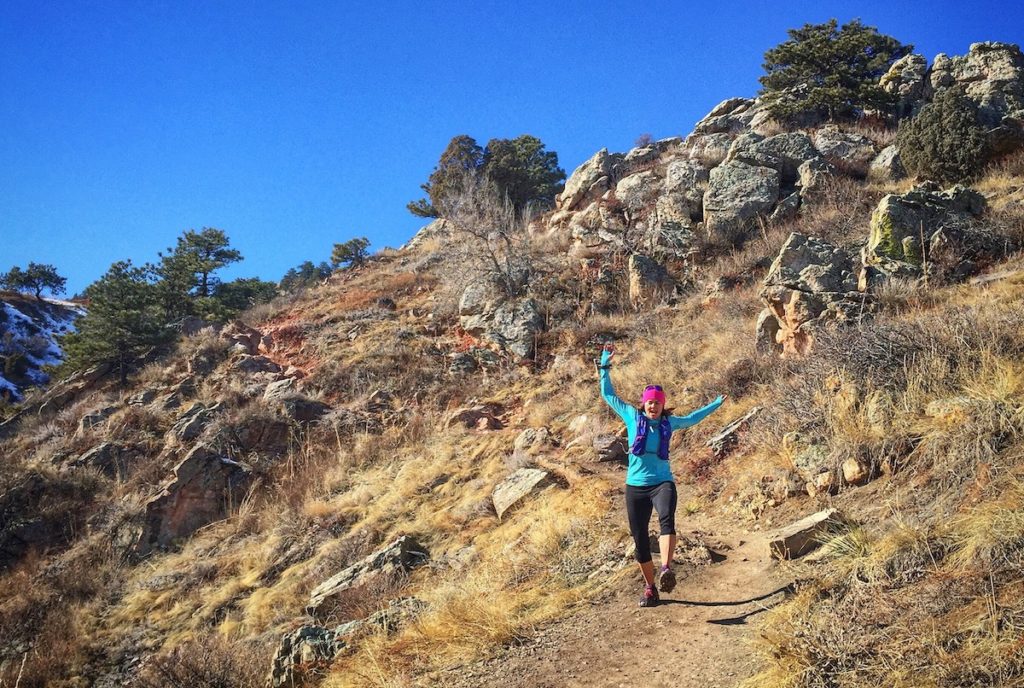

By: Trail Sisters
The Panel of Experts from Ask the Trail Sisters answer your questions!
Learn more about the panelists and ask a question!
I’m fearful of falling when running downhill. Do you have any tips or techniques that can help me?
Recognize that falling is part of trail running sometimes and that there’s training involved in going downhill too. Practice ‘finding your line’ by scanning ahead and downward a few feet in front of you so that you’re aware of the trail and where your foot placement needs to be. Keep your feet beneath you so that you’re not over-extending and throwing yourself off balance, which increases the risk of injury. Relax your shoulders so that your upper body remains loose and responsive rather than rigid. Keep breathing as you go, giving yourself permission to slow down and feel safe as you build your technique.
Practice makes perfect…run downhill repeats. Also, doing cadence drills to ensure you’re moving your legs fast enough to keep up with you can help. If you’re tired, slow down to minimize the risk of tripping.
My worst falls have been on flat and smooth terrain when I’m not paying much attention. I sprained my ankle tripping on absolutely nothing while running down my own paved driveway and I scraped up my knees running on a local rails-to-trails path. Now, living with a toddler and watching her fall a lot has helped me pay more attention to do’s and dont’s for moving downhill well. First of all, it might sound dumb but it’s dumb things that often get us in trouble: make sure your hands are free while you’re running downhill. Wear gloves/mittens instead of pulling your long-sleeve down over your hands if it’s chilly and try not to be carrying anything in your hands. Everyone has their own running gait and comfort level so there’s no one-size-fits-all way to run down a hill. It’s okay to slow down to whatever pace feels comfortable for you, use your (free) hands to grab hold of trees or rocks along the way, and flail your arms around for balance as you move. Keep your eyes a few feet ahead of you on the trail – make sure you take your sunglasses off if you’re in the shade and turn your headlamp on at dusk when it’s hardest to perceive depth. Make sure you’re wearing the right kind of footwear for the terrain you’re running down. You’ll want to make sure your shoes fit you well (not too big, not too small), are laced up snuggly for stability, and that they offer the right kind of grip for the kind of terrain you’re running on (is it wet, dry, loose, soft, steep or rocky?). Finally, practice, practice, practice. The best way to get better at running downhill is to run downhill more. With each step and each stumble you’ll learn, build confidence and improve.
You know when you’d go over those collapsing bridges in Super Mario Brothers – how if you proceeded at a normal pace, the little bridge sections would just fall away and take you with it? But if you held down B and just gunned it, you’d make it across no problem? I think about running down technical trails the same way.
Katie Grossman
I learned that short quick steps and following the path of least resistance, like water flowing, works well. I have used these ideas with overall success. The other technique is pretend like you’re skiing, so weaving back and forth across the trail. It decreases the angle enough to keep better control of your footing. Always be looking about 6 ft ahead of you! All this being said, falling happens. When it does, relax and roll with it. Aim for soft bushes or grass if you can!
Trekking poles allow you to gain some additional traction and control on some surfaces. These are used by many trail and ultrarunners. That said, if you suddenly find yourself on unstable or steep downhills, there is no rule that says you can’t slow down and/or walk! Where your footing is unstable, slow your pace enough for you to regain your confidence, and keep it that way until the ground beneath you becomes less technical or flattens out. On trails and off trail when the terrain has been the most technical that I’ve experienced, with plenty of scree, I have been known to “surf” down the loose scree or even sit down and scoot on my bottom!
Practice downhill running with poles. They provide extra stability and confidence as you learn the movement. Also, practice walking downhill first and slowly increase your speed.
This may sound contraindicative, but there is such a thing as going too slow. You know when you’d go over those collapsing bridges in Super Mario Brothers – how if you proceeded at a normal pace, the little bridge sections would just fall away and take you with it? But if you held down B and just gunned it, you’d make it across no problem? I think about running down technical trails the same way. If you’re taking things extra slow and trying to avoid every little rock and root, you’re in contact with the ground longer, have no forward propulsion to help you recover, and inevitably roll an ankle or stumble. But if you lean forward, keep your feet under you, relaaaax and just go for it – you tend to slide with the terrain as you hit moments of instability rather than let them take you out.
When I first started trail running, I fell all the time. Be patient with yourself and keep getting back up. I dedicated more time to the trails so that I could practice picking up my feet and reacting to the terrain. Now, I only fall sometimes! If you’re transitioning from the roads, it will initially take a little more concentration when you run on trails. Soon, though, your feet and body will feel right at home out there!
So much to say on this one!
- Finding your line: Instead of allowing your eyes to focus on obstacles, train your eyes to look for the open spots. It’s natural to be drawn to the problem spots, but through practice, work on re-wiring your brain to see only the welcoming/safe spots to step.
- Land and push off on your toes! You want to practice leaning slightly forward at the waist, and landing on your toes/front of foot. Heel striking can create a greater risk of rolling an ankle, and presents a breaking effect which is harder on your body. Additionally, the less touch you have to the ground (toes vs. entire foot), the less chance of touching a bad spot. *Landing on heels and leaning back is appropriate for extremely STEEP terrain.
- Practice quick feet and high knees, as you want to feel more agile and springy.
- Grow your confidence by starting with downhill running repeats on a moderately sloped grassy hill, then increase steepness. When comfortable with body control and form, start adding in trails (start with less technical and work towards more technical).
- You are eventually going to fall…it just comes with the territory. We all do it.
Practice, practice, practice! Start on a non-technical surface and work on leaning forward from the waist, not braking with your heels (that will certainly shred your quads!). Agility drills in the gym can help with proprioception, and the more you run on technical trails, the more confidence you will build (says someone who struggles with the rocky downhills of east coast trails!).
Learn to pick your lines! I learned by following speedier runners down hill and trusting the line they picked through the rocks would be a good one for me. Other people learn by applying Mtn bike or skiing skills to knowing the best way through. You can also think like or envision water. Water picks the path of least resistance. You should too!
When running downhill, trust your body and avoid leaning back and digging your heels into the ground to slow down. Try to keep a neutral position so your feet stay underneath your hips. Quicken/shorten your stride (the floor is lava!) to minimize impact, especially in the event you roll your ankle. Instead of looking down at your feet, scan several feet ahead of you to be prepared for what you might land on. When coming down a steep grade, I run in wide zig zags (think of them like switchbacks on a steep trail!).
I am also not a strong downhill runner, so I always pretend I am sitting in a chair, engaged core, and let it rip.
When you run downhill you want to keep your eyes a little out in front of you rather than on your feet. Pick a line to follow and that will help you go around rocks and bumpy areas much more smoothly. It’s also helpful to have good shoes with great traction and don’t lean back as you run. Leaning back will make it much easier to fall.
Practice! Seriously, the more you think about the more it’ll stress you out. Just laugh, dust yourself off and keep moving!
I view downhill running in two different ways:
1. A control falling motion- sometimes I put my arms out to create balance
2. A slower sit back on your heals motion- allow your quads to absorb more of the shock
Both of these require looking out in front of you, picking the route you want, keeping your head up, while moving with quick feet. It’s a good thing to remember that falling is possible but it’s how you cope with it when you do. You can always start with a gradually downhill surface and when you feel more comfortable move onto more technical surface.
The balance training-especially single legged exercise can be helpful. You can train “feet and eye” coordination so you can quick react to unexpected obstacles on the trail such as rocks or roots. You can also try to train your cadence speed so you can smoothly turn your leg over on downhill without breaking too much by spinning on stationary bike with mild resistance on the wheel. Breaking too much can destroy your quads so quick ( from my experience, haha). You can also study the course and know how steep and rough the downhill parts are. This helps to plan your downhill running on the race! If you can be little confident on the downhill, it is SO MUCH fun. Practice makes you feel confident.
I was too! It was actually one of my biggest fears when I started trail running. Now I can’t get enough downhill. The more technical the better. Here are my best tips: keep your stride length short, cadence high, and pay attention. Pick your line. Even when you’re running with someone don’t follow them step for step. Most of my downhill falls happen when I’m chatting and the trail is smooth. I inevitably end up supermaning my way down the trail.
More than likely, you’re going to take a digger at some point. If you can, tuck and roll. This will protect your limbs and neck. I’ll tell you that this is great in theory, but what actually ends up happening is your body tenses, you get scared and you end up sliding like you’re coming into home base at the World Series ballgame. So when this happens, I actually lay there for a moment and do a full system check. Is anything broken? Can I move my head, hands, fingers, ankles, legs? Am I bleeding? Is it a cut or just trail burn? More times than not, I’m a little bruised and bloody so I’ll dust myself off and use a wipe on my bloody parts and keep running. When it’s more serious, I have a first aid kit on me so I can tend to my wounds.
When I broke my fingers after I fell, I ended up getting really light headed and nauseous, so sitting was necessary since my body went into shock. I called my emergency contact and gave an approximate time I would be off the trail, and then went straight to the ER. I took my Buff off my neck and tried to stabilize my fingers and hand so they were protected as well. If you are running ALONE and this happens, check if you have cell reception and call your emergency contact. If it’s really serious, call 9-1-1.
About the Author

Ask the Trail Sisters Panel of Experts is made up of inspirational and knowledgeable women who share a love for trail running, hiking, and the outdoors. These women volunteer their time and expertise to help others enjoy a better experience on the trails.
Share This Article!


